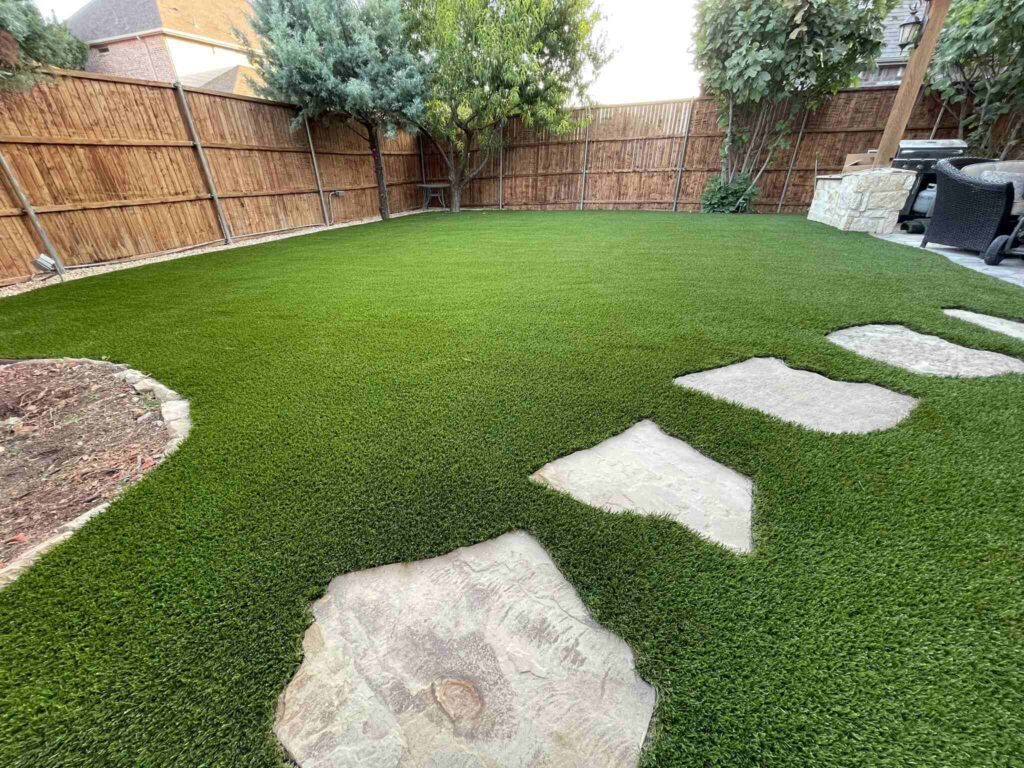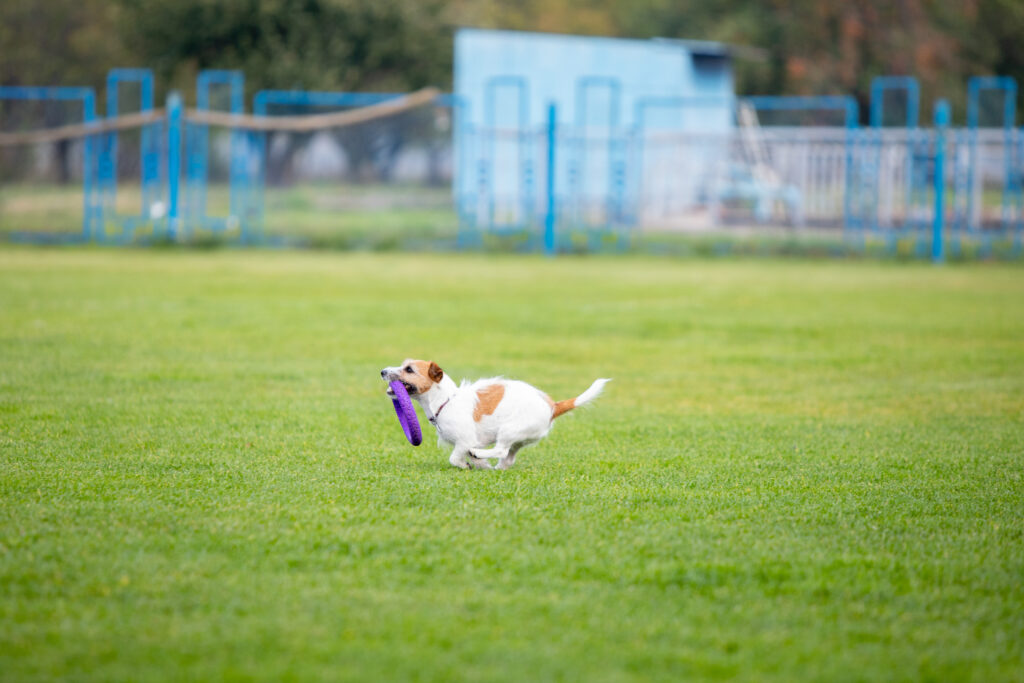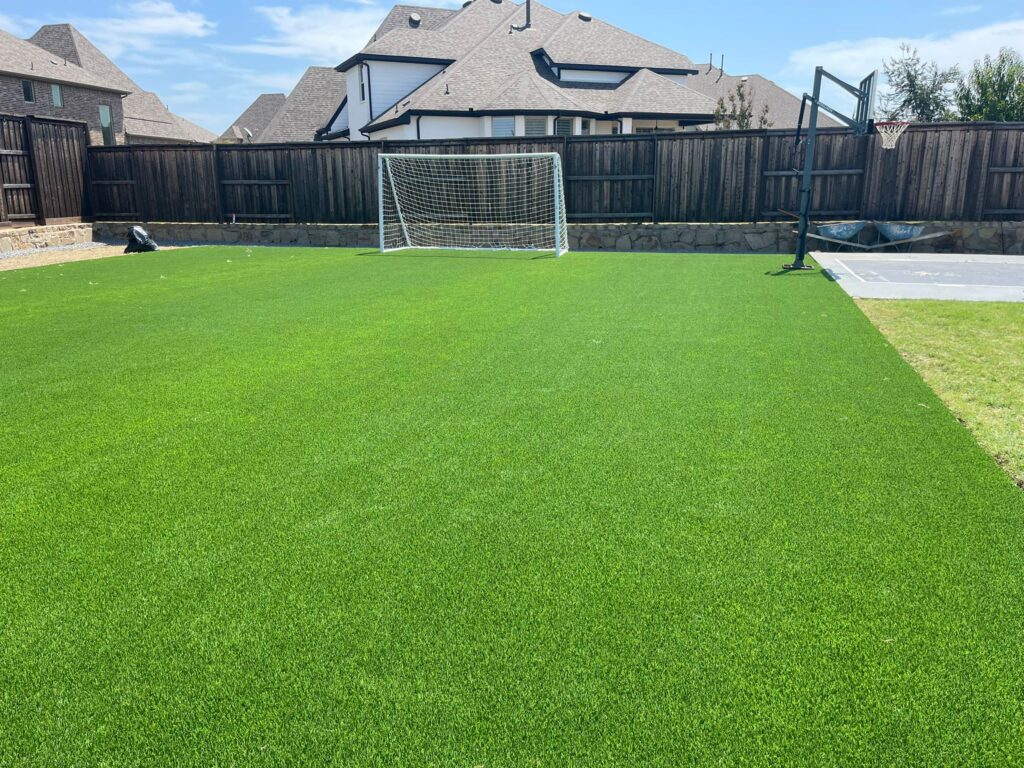Is Artificial Grass Too Hot for Dogs?
Artificial grass can become hot, especially in direct sunlight and warmer months. The surface temperature of synthetic turf can rise significantly higher than that of natural grass, sometimes reaching levels that could cause discomfort or even burn your dog’s paws. However, this doesn’t mean artificial grass is unsuitable for pet owners. High-quality artificial grass products often use advanced cooling technologies to reduce heat absorption and retention. Additionally, regularly watering the synthetic turf or installing it in shaded areas can help maintain a more comfortable temperature for your pets.
Artificial grass has become increasingly popular among homeowners, especially pet owners. Its low maintenance and aesthetic appeal make it an attractive alternative to natural grass. However, many pet owners have raised concerns about whether artificial grass is too hot for dogs. This blog post addresses this concern, provides valuable insights, and offers practical tips for pet owners considering artificial grass.
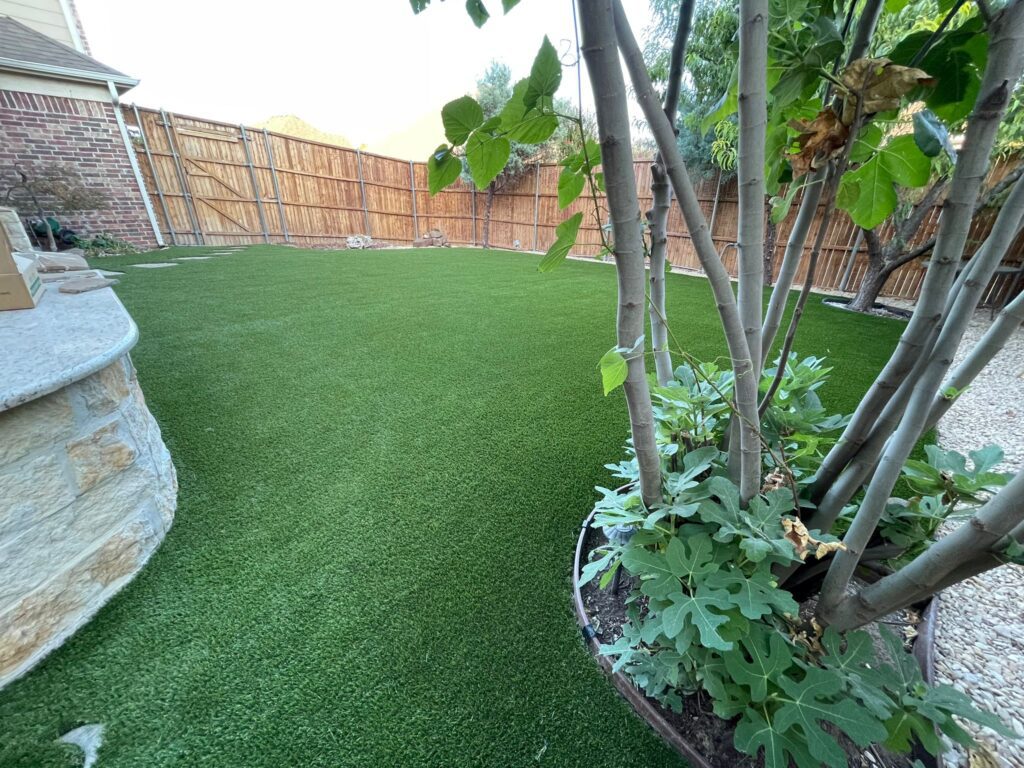
Signs of Heat Distress in Dogs
Before diving into the specifics of artificial grass, it’s essential to understand the signs of heat distress in dogs. Dogs can’t sweat like humans, so they are more susceptible to overheating. Common signs of heat distress include excessive panting, lethargy, drooling, and red or pale gums. In severe cases, dogs might even collapse or suffer from seizures. Knowing these signs can help pet owners take immediate action to cool down their pets and prevent serious health issues.
Dogs primarily cool down through panting and the pads of their feet. When these surfaces come into contact with hot surfaces, it can exacerbate their heat distress. Therefore, understanding how various surfaces, including artificial grass, retain heat is crucial for pet safety during hot weather.
It’s also worth noting that some dogs are more prone to heat stress than others. Brachycephalic breeds like Bulldogs and Pugs, older dogs, and those with existing health conditions are particularly vulnerable. Pet owners should be extra cautious in these cases.
Heat Retention Properties of Synthetic Materials
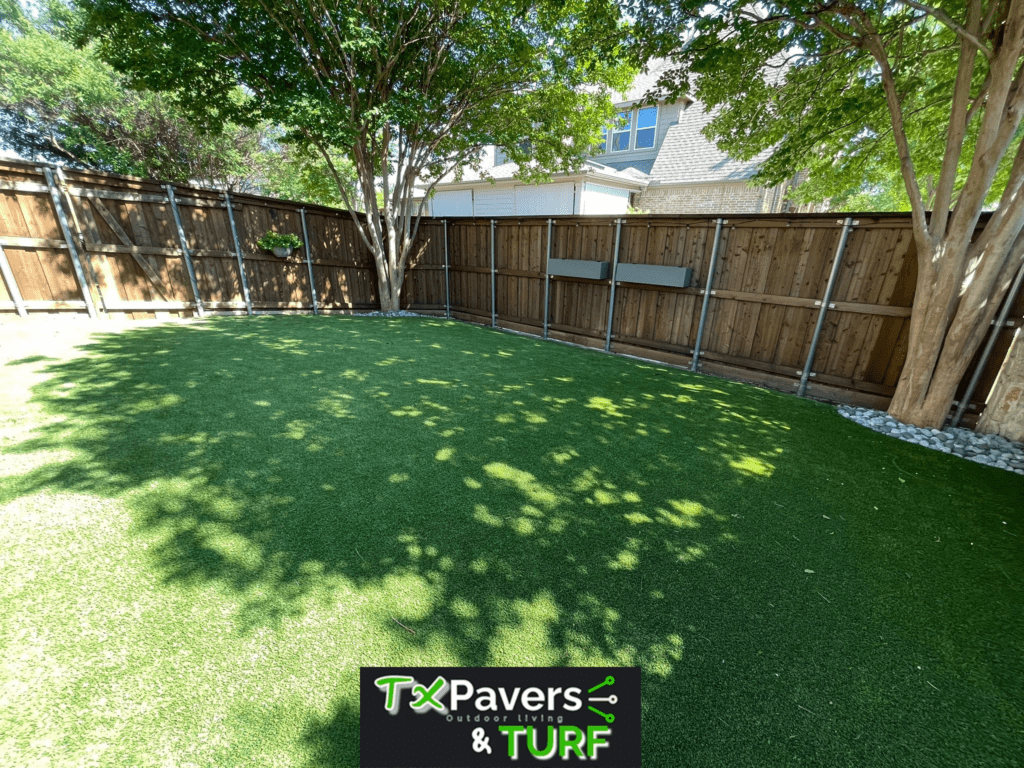
One of the main concerns about artificial grass is its heat retention properties. Unlike natural grass, which has a cooling effect due to its moisture content and natural processes, synthetic materials tend to absorb and retain heat. This difference can make artificial grass significantly hotter than natural grass under the same conditions.
Synthetic fibres, commonly made of polyethene or polypropylene, are known for their durability and realistic appearance. However, these materials can get quite hot in direct sunlight. Studies have shown that artificial grass can reach temperatures up to 150°F (65°C), which is well above the threshold that can cause discomfort or burns to a dog’s paws.
The infill used in artificial grass installations also affects heat retention. Infill materials such as rubber crumbs can absorb heat and contribute to the surface’s overall temperature. Even though some advanced infill materials are designed to reflect heat, they are still warmer than natural soil and grass.
Does Artificial Grass Smell When It Gets Hot?
Another concern pet owners have is whether artificial grass smells when it gets hot. While synthetic grass does not emit any odour, the infill materials and accumulated pet waste can develop unpleasant smells, especially in high temperatures.
Urine and faeces can get trapped in the infill and artificial fibres, leading to bacterial growth and odours. Regular cleaning and maintenance are essential to keep artificial grass hygienic and odor-free. Some synthetic grass products are treated with antimicrobial agents to help minimize odour, but even these require regular care.
Implementing a sound drainage system and pet-friendly infill materials can also help reduce smells. Pet owners should be diligent about cleaning up after their pets and hosing down the artificial grass to remove any residues that might cause odours.
What type of Artificial Grass Is Best for Dogs?
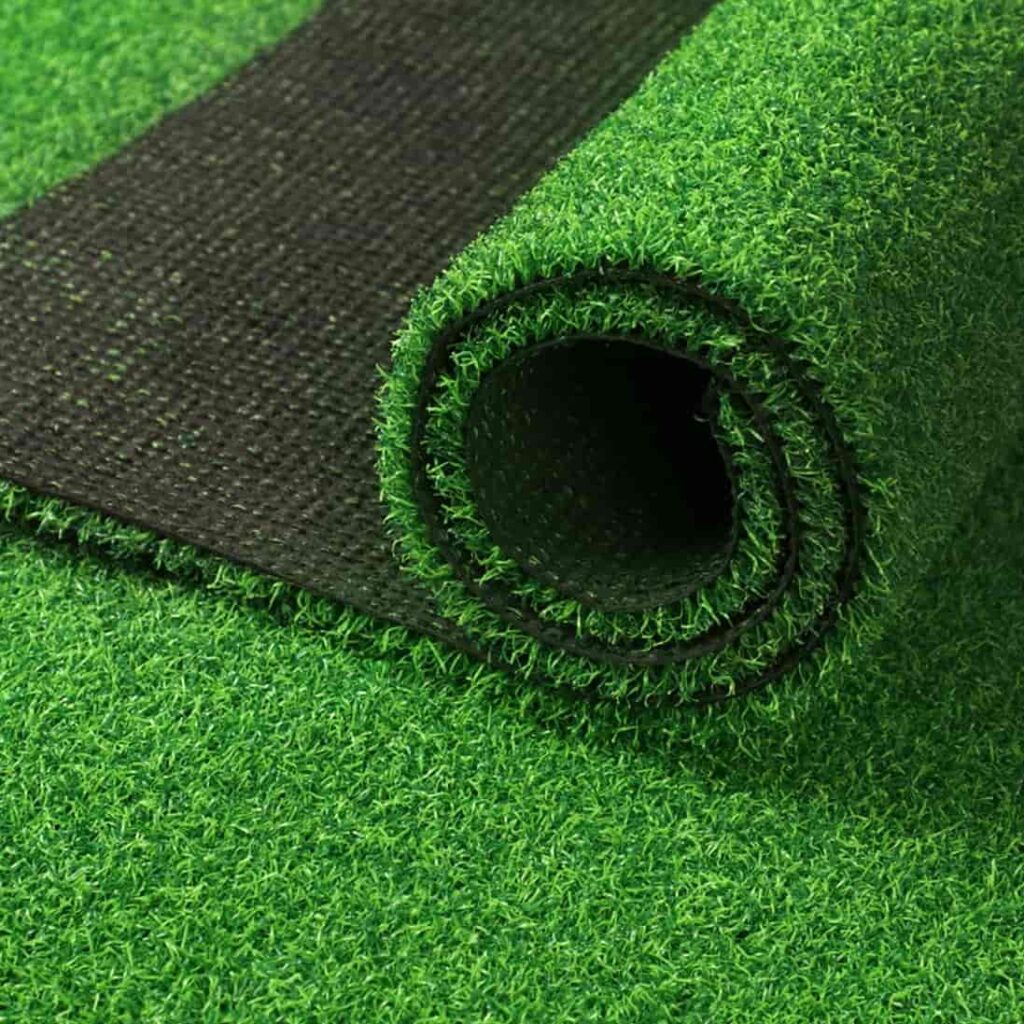
Several factors must be considered when choosing the best artificial grass for dogs. Firstly, look for artificial grass products specifically designed for pets. These products often feature enhanced durability to withstand digging rough play and better drainage to manage pet waste.
Another critical factor is the pile height and density of the grass. Shorter pile heights tend to heat up less than longer ones. Dense, short-pile grass can give your pets a more excellent surface and a natural look.
The type of infill used is also crucial. Opt for pet-safe infill materials designed to stay more relaxed and drain well. Silica sand and organic infills like walnut shells are good options. Avoid rubber crumb infills, which can get extremely hot and are not pet-friendly.
Why Do Dogs Love Fake Grass?
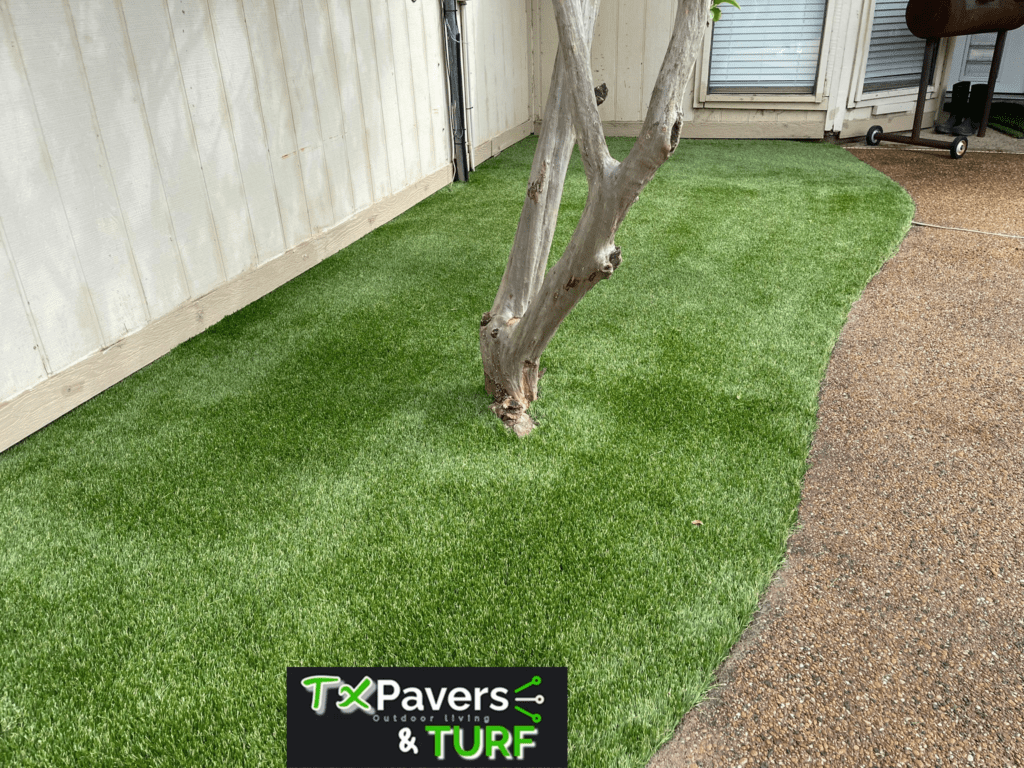
Despite the heat concerns, many dogs enjoy playing on artificial grass. One reason is its consistent texture and feel. Unlike natural grass, which can have patches of mud, dirt, and uneven surfaces, synthetic grass provides a uniform area for dogs to run and play.
Artificial grass is also less likely to harbor pests like fleas and ticks, making it a safer environment for pets. The absence of mud and dirt means that dogs stay cleaner, a bonus for pet owners who want to keep their homes tidy.
Moreover, artificial grass is resilient and can withstand heavy use, making it ideal for households with active dogs. The cushioning effect of the grass fibres and infill materials can provide a comfortable surface for dogs to lie on and play.
The Heat Question: Is Artificial Grass Too Hot for Dogs?

Let’s address the central question: Is artificial grass too hot for dogs? The answer could be more straightforward. While it is true that synthetic grass can get significantly hotter than natural grass, there are ways to mitigate this issue and ensure your pet’s safety.
Pet owners who live in regions with scorching climates might find that natural grass or other ground covers are more suitable for their pets. However, for those who prefer the benefits of artificial grass, some measures can be taken to keep it cool.
Understanding the difference in heat absorption between natural and artificial grass is critical to making an informed decision. While natural grass cools down the surrounding area through transpiration, artificial grass lacks this natural cooling effect. However, it’s possible to choose artificial grass products to reflect heat and stay more relaxed.
Real-life experiences and expert opinions suggest that artificial grass can be a safe and comfortable option for pets with proper installation and maintenance. Shade structures, regular watering, and selecting the correct type of grass and infill can make a significant difference.
Factors Affecting Heat
Several factors influence the heat retention of artificial grass, and understanding these can help pet owners make better choices. The colour of the grass, for instance, plays a role. Darker shades tend to absorb more heat, while lighter colours can reflect sunlight and stay more relaxed.
The type of infill used also affects the temperature. Rubber crumb infills can get extremely hot, whereas silica sand and organic infills like walnut shells are better at staying calm. Some advanced infill materials are designed to reflect heat and provide a more excellent surface.
Environmental conditions such as shading and airflow can also impact the temperature of artificial grass. Installing synthetic grass in areas with natural shade from trees or structures can help reduce heat buildup. Increasing airflow around the area can also help dissipate heat more effectively.
Mitigating Heat for Pets
Pet owners can take several practical steps to ensure their pets’ safety and comfort on artificial grass. One effective method is to water down the grass regularly. A quick spray with a hose can significantly reduce the temperature, making it more comfortable for pets to walk and play on.
Choosing the right product is also essential. Opt for artificial grass designed for pets, with heat-reflective properties and pet-friendly infill materials. Look for products that have built-in UV protection to reduce heat absorption.
Installing shade structures such as canopies or pergolas can provide additional protection from direct sunlight and create more excellent areas for pets to relax during the hottest parts of the day.
Compared to Natural Grass

When comparing artificial grass to natural grass, several pros and cons, especially concerning heat, come into play. Natural grass has a cooling effect due to its moisture content and natural processes like transpiration. It also feels cooler underfoot and is less likely to cause burns or discomfort.
Conversely, artificial grass offers several benefits, including lower maintenance, fewer pests, and a cleaner environment. While it can get hotter, choosing the right product and implementing cooling measures can mitigate this issue.
For pet owners, the decision often comes down to weighing these pros and cons. If minimizing heat is a top priority, natural grass might be the better option. However, artificial grass with the proper precautions can be a viable choice for those looking for a low-maintenance, resilient surface.
Conclusion
In conclusion, the concern that artificial grass is hot for dogs is valid, but that doesn’t mean it is unsuitable for pets. By understanding the factors that affect heat retention and taking practical steps to mitigate these, pet owners can create a safe and comfortable environment for their furry friends.
To summarize, key points include:
- Recognizing the signs of heat distress in dogs.
- Understanding the heat retention properties of synthetic materials.
- Choosing the correct type of artificial grass and infill.
Practical tips such as regular watering and installing shade structures can help keep artificial grass cool.
For pet owners considering artificial grass, weighing the pros and cons and making an informed decision based on their needs and environment is essential. If you have any experiences or concerns about artificial grass for pets, we encourage you to share your thoughts and join the conversation. Together, we can ensure our pets enjoy a safe and comfortable outdoor space.

